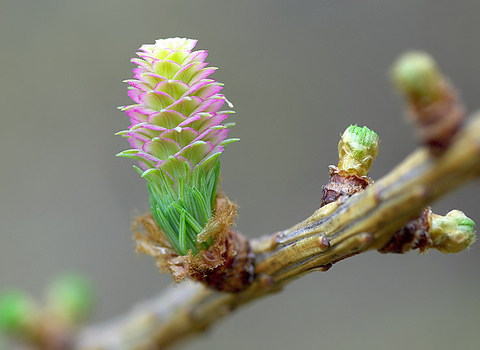
©northeastwildlife.co.uk
European larch
The European larch was introduced into the UK from Central Europe in the 17th century. Unusually for a conifer, it is deciduous and displays small, greeny-red cones on brittle twigs.

©northeastwildlife.co.uk